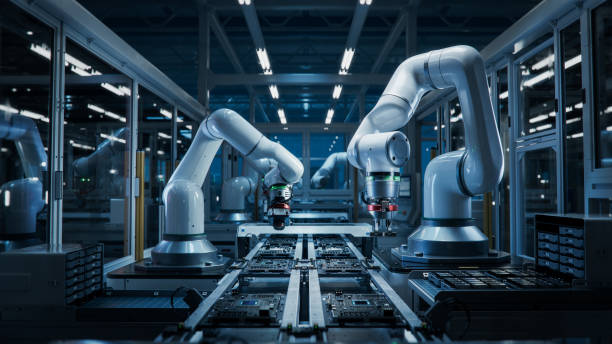Choosing the right mica band heater isn’t just about grabbing the cheapest option off a catalog. What looks like a minor price change can actually come from a technical detail that most buyers wouldn’t think twice about. Behind that price tag, there’s a lot more going on—and asking the right questions can make a real difference in both cost and performance.
How Does Watt Density Influence Mica Band Heater Pricing
Watt density tells you how much power is being packed into every square inch of a mica band heater. The higher the watt density, the more energy a heater delivers—and the more strain it can handle. That kind of performance requires precision engineering, so heaters with higher watt densities often come with a bigger price. It’s not just about cranking up the power; it’s about making sure the heater won’t burn out or degrade over time. That’s why understanding watt density matters when looking at a mica band heater price—it directly impacts durability and lifespan.
What buyers sometimes overlook is how the heat transfer surface and application type play into watt density choices. A simple setup with good heat conduction might work perfectly fine at a lower density, keeping costs down. But in more demanding setups—like plastic extrusion or packaging lines—higher density becomes non-negotiable. So while two mica band heaters may look the same, if one has been rated for high-output, high-heat jobs, expect it to cost more than its low-watt twin.
Are Customized Dimensions Affecting My Heater Quote
Standard sizes are cheaper because they’re faster to produce, but custom dimensions add a layer of complexity that manufacturers need to account for. Anytime the band’s size has to be tailored for unusual equipment or unique specifications, pricing naturally adjusts. Even a half-inch variation can lead to a different production run, and that means extra time, tooling, and quality checks.
It’s not only about the outer diameter and width. Lead wire exit points, clamping methods, and internal construction can also be modified—and each tweak impacts both function and price. A customized mica band might be the only way to get consistent performance in niche machines, but buyers should expect that extra flexibility to reflect in the quote. For operations where cartridge heaters and band heaters work side by side, having the right fit is more important than trimming a few dollars off the budget.
What Role Does Insulation Quality Play in Pricing Variability
Insulation doesn’t get much attention until a heater runs too hot or energy bills spike. But in reality, it’s a core factor in how mica band heater price is set. High-grade insulation materials help trap heat around the barrel and reduce heat loss into the surrounding space. That leads to better energy efficiency, faster heat-up times, and less work for your temperature controls.
Lower-cost mica bands often cut corners with cheaper insulation, which might work in low-demand environments but leads to higher operational costs over time. The insulation type also affects how the heater tolerates repeated thermal cycles. Quality insulation stands up to long-term use without breaking down, cracking, or shedding particles—key in industries that value both safety and cleanliness. Buyers who ask about insulation materials before choosing a product often get more life out of their heaters and avoid the hidden costs of premature failure.
Can Material Grade Changes Significantly Shift Heater Costs
The choice of sheath material plays a quiet but powerful role in heater pricing. A standard mica band might come with a stainless-steel outer shell—but not all stainless steels are the same. High-grade alloys with better corrosion resistance or thermal conductivity can raise the price, especially if they’re needed for harsh environments or food-grade applications.
Then there’s the internal material. Resistance wire quality, mica sheet purity, and even the grade of clamping materials can vary. These details may seem small, but they affect how evenly the heater warms up and how long it lasts under daily stress. If a buyer needs a heater for a process that runs non-stop for weeks at a time, skimping on material quality could lead to downtime. So yes, material upgrades often raise costs—but in settings where uptime matters, the higher mica band heater price is often well worth it.
Do Bulk Orders Provide Substantial Cost Efficiency
Yes, but it depends on how the order is structured. Bulk pricing on mica bands tends to favor repeat orders, long-term contracts, or standardized specifications. If all the heaters are the same size, rating, and build, manufacturers can reduce setup time and spread production costs. That’s where the savings happen—not just in quantity, but in consistency.
However, if a buyer is ordering a large batch of custom heaters with different specs, that discount window can narrow quickly. It’s a smart move to ask how much flexibility exists in standardizing orders. Buyers who use both cartridge heaters and mica bands in large volumes may find extra discounts by bundling product types or streamlining specs. The bigger the order, the more sense it makes to align technical requirements early to avoid rework and take full advantage of cost efficiency.
Are Installation Accessories Included in the Quoted Price
It’s easy to assume that the quote covers everything, but many buyers find themselves caught off guard by the accessories. Items like mounting brackets, terminal covers, or specialized clamps may not be included in the base mica band heater price. That can add unexpected costs once installation begins.
In some cases, these accessories are essential for safe and effective operation. Without them, the heater might not fit correctly, or worse—it could pose a safety risk. Always check whether the quote includes everything needed to fully install and power up the heater. A heater might be competitively priced, but if it needs $100 worth of extra hardware to function, that price tag isn’t as low as it looks.
How Do Lead-Time Requirements Impact Final Pricing
Fast shipping sounds great—until it comes with a rush fee. Short lead times often mean reshuffling production schedules, speeding up material sourcing, and putting more pressure on quality control teams. That urgency translates into added cost, especially for custom mica band heaters or bulk cartridge heater orders.
On the other hand, longer lead times give manufacturers breathing room, which typically results in better pricing. Buyers working on tight project timelines should factor in the cost of speed. Asking about standard versus expedited lead times can uncover hidden savings—or avoid last-minute budget surprises. Planning ahead always gives more options, and better control over the final mica band heater price.

